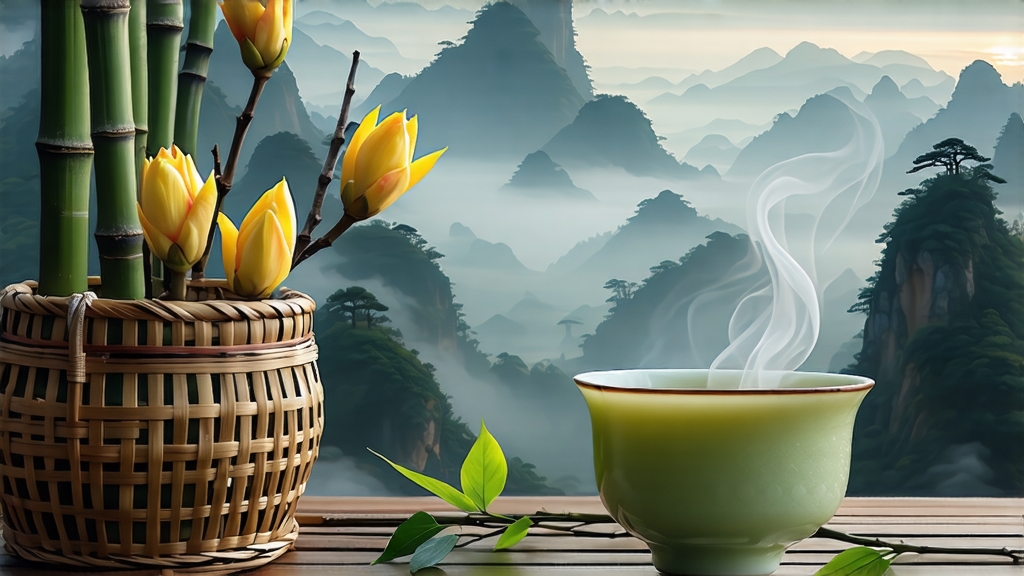
Tucked high in the mist-veiled folds of the Dabie Mountains in western Anhui province, Huoshan Huangya—“Yellow Bud of Huoshan”—has quietly captivated Chinese emperors, poets, and tea aesthetes for more than seven centuries. Unlike the better-known green teas that flash across Instagram feeds, this rare yellow tea remains a whispered legend even inside China; outside the country it is virtually unknown. Yet within its slender, down-curled leaves lies a flavor profile so suave—orchid, steamed maize, and mountain spring water wrapped in a cashmere texture—that one sip explains why the Ming-dynasty Imperial Household decreed it a tribute tea in 1554 and why modern sommeliers now call it “the Burgundy of yellow teas.”
History: From Imperial Tribute to Mountain Secret
The first written record appears in the local Huoshan County Annals of 1495, noting that monks at the Jinzhu Temple bartered “small yellow buds” for salt and iron. When the Ming court moved its capital to Beijing, imperial censors touring Anhui sent memorials praising the bud’s “golden color and mellow nature,” a welcome respite from the sharper green teas then fashionable. By 1554 the Ministry of Rites had registered Huoshan Huangya as one of only six tribute teas nationwide; every spring, 2.5 kg of the finest buds were sealed in bamboo tubes, wrapped in yellow silk, and rushed by relay horses to the Forbidden City within seven days. The Qing dynasty continued the practice, but the 1911 revolution severed imperial demand and the tea gardens reverted to subsistence farming. Production all but vanished during the 1930s wars and the collectivization that followed. It was not until 1972—when a retired professor from Anhui Agricultural University rediscovered ancient withering troughs in a monastery attic—that the craft was painstakingly revived. Today fewer than 300 households across three villages are certified to produce authentic Huoshan Huangya, yielding roughly 3 metric tons a year, 70 % of which never leaves Anhui.
Micro-terroir: Why the Dabie Mountains Matter
Huoshan County lies at 31° N, 800–1,200 m above sea level, where the north-subtropical monsoon collides with cool air sliding down the Dabie massif. The result is a 15 °C average spring temperature, 85 % humidity, and fog that lingers until 10 a.m., filtering sunlight into a soft, diffused glow. The soil is Phyllite-derived, rich in selenium and zinc, with a pH of 5.2—ideal for the local small-leaf cultivar “Huoshan Jiulian,” whose buds accumulate more theanine and less catechin than the Longjing #43 clone popular in Zhejiang. The combination yields a tea that is naturally sweet, low in astringency, and capable of developing the honeyed “huang” (yellow) liquor that defines the category.
Craft: The Lost Art of Menhuang—“Sealed Yellowing”
Yellow tea’s identity rests on a unique micro-fermentation step called menhuang, literally “closing the yellow.” After picking a standard of one bud with one unfolded leaf (around 2.2 cm length), the leaves undergo six meticulous stages:
- Sha-qing (kill-green) over charcoal-fired woks at 160 °C for 2.5 minutes—just enough to halt oxidative enzymes while preserving a 12 % moisture core.
- Initial rolling for 4 minutes at 38 rpm to bruise cell walls without breaking the bud tip.
- First menhuang: the semi-dry leaves are piled 8 cm deep inside a bamboo tray, covered with wet linen, and rested in a 32 °C, 75 % RH room for 40 minutes. During this enclosed “sweat,” chlorophyll degrades into pheophytin, catechins dimerize, and a faint maillard aroma reminiscent of fresh corn appears.
- Low-temperature re-firing at 80 °C for 8 minutes to reduce moisture to 20 %.
- Second menhuang: the leaves are wrapped in parchment paper and placed inside a wooden chest; over 24 hours the core temperature climbs gently to 45 °C, driving a secondary yellowing that deepens the liquor color and polishes any remaining grassiness.